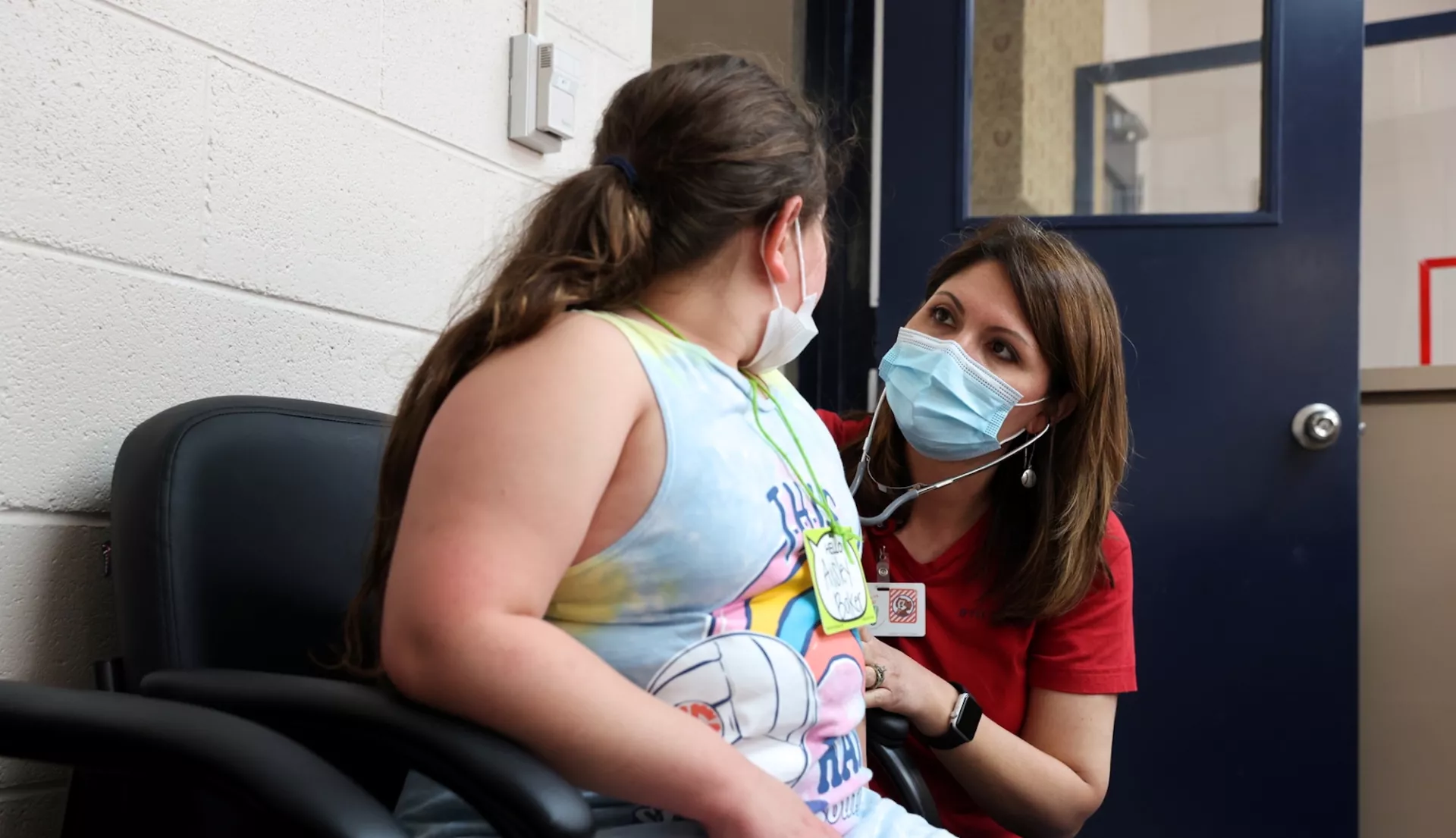Key Takeaways
- After two years of pandemic, there are lots of fears swirling in the community about a new virus.
- The CDC says that monkeypox risk is low in schools.
- School nurses will stay updated on what CDC is finding and recommending as they closely monitor monkeypox and new variants of COVID-19.
There’s a lot of excitement as students and staff head back to school for a fresh start in 2022-2023, but the specter of virus -- COVID-19 and now, monkeypox -- hangs in the air like an ominous cloud.
“I’ve been seeing and hearing a lot of chatter that shows our community is concerned about monkeypox and the highly transmittable COVID variant,” says Kate King, the school nurse at World Language Middle School in Columbus, Ohio. “After going through COVID, actually, as we’re still dealing with COVID, anything else that comes just naturally adds to the fear.”
But King and school nurses across the country are putting their school communities’ minds at ease by assuring them that nurses are keeping a close eye on both viruses by following guidance from the Center for Disease Control and Prevention (CDC).
“In addition to following what the CDC says, school nurses also monitor the cases all the time and work with community health partners to stay up to date on developments with any infectious diseases,” she says.
CDC: Monkeypox Risk is Low
In the meantime, it’s important to become educated on what the CDC says about monkeypox: the risk of monkeypox to children and adolescents is low.
According to the CDC, monkeypox can infect anyone who has been exposed through direct skin-to-skin contact or who uses contaminated objects, fabrics, or surfaces.
Parents have asked about students wrestling or playing contact sports, group activities in the gym or on the playground, or even sharing a seat on the bus and being jostled into their neighbor after a bump in the road. Transmission in any of these scenarios is unlikely, according to the CDC.
But what monkeypox does remind us of, King says, is the need to regularly clean (with soap and water) and carefully, when necessary, disinfect mats and other gym equipment as well as any high-touch areas in the school to help prevent the spread of all transmissible viruses.
When parents or school staff ask King if she is worried about monkeypox as schools reopen, her answer is no. Is she keeping her eyes out for new information and developments? Yes, all the time.
“And I encourage anyone with questions or concerns about monkeypox to contact me or their school nurse,” she says.
For more information on Monkeypox, visit these CDC resources:
What You Need to Know about Monkeypox if You are a Teen or Young Adult | Monkeypox | Poxvirus | CDC
New Year, New COVID Threats?
Summer fun and travel were back in full swing this year, but many came home from vacation with an unwanted souvenir – the BA.5 variant of COVID-19. Most reported mild symptoms, but widespread cases of COVID this summer served as a reminder that the virus is definitely still here.
In King’s district in Columbus, the district follows CDC guidelines and the city health department’s mask recommendations based on a tiered system of case numbers that are color-coded green, yellow, and red.
See CDC’s latest guidelines on COVID-19
“We are in red currently, and the recommendation is to mask indoors,” she says. “We now recommend to school community members and staff to wear N95 or KN95 respirators to protect themselves, but we don’t stigmatize anyone for their decision to mask or not.”
Immunizations Offer Best Protection
King, like school nurses everywhere, continues to promote health and safety precautions like handwashing, cleaning and disinfecting surfaces, and good ventilation throughout the school building.
But the most important message that school nurses as well as local and state health officials want to get out is that everyone should get vaccinated.
“As school nurses, we know that full immunization is the best protection,” King says.
Linda Mendonca is the president of the National Association of School Nurses (NASN) and she says, “around the country, nurses are prepared to handle COVID-19 with the mitigation and testing strategies they have used for the past two and a half years.”
“It all goes back to common sense infection control in the nurse’s office,” she says. “But we also emphasize that vaccines and boosters for all who are eligible is the best mitigation strategy we have. The more protection we have, the better.”
That’s why many schools around the country are hosting vaccine clinics so parents and caregivers don’t have to take off work to get students vaccinated or boosted – it can happen right there on school grounds.
“It’s easy for parents and is often more comfortable for kids than the doctor’s office,” she says.
And though Mendonca says nurses stand ready to handle what the future may hold for COVID-19 or even monkeypox, the hope is that they can use what they’ve learned and then get back to the regular work of school nursing.
“So much was pushed aside during the pandemic,” Mendonca says. “Regular screenings, care coordination, and health education.”
But Mendonca’s biggest hope is that all schools will be fully staffed with at least one nurse. School nurses, like other educators, are in short supply. Many left the profession or retired, burned out after working long days and weekends during the pandemic.
In many districts, there is no budget to hire more nurses or policy makers decide to use money for other purposes. Unfortunately, the problem with school nurse availability is often one of policy and not just availability.
The NASN will release a report on the school nursing workforce later this year, but spoiler alert: Mendonca says staffing is “not where we want to be.”
Take Action:
Advocate that American Rescue Plan funding be used for more school nurses!







